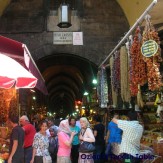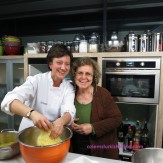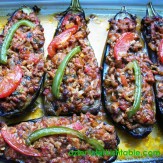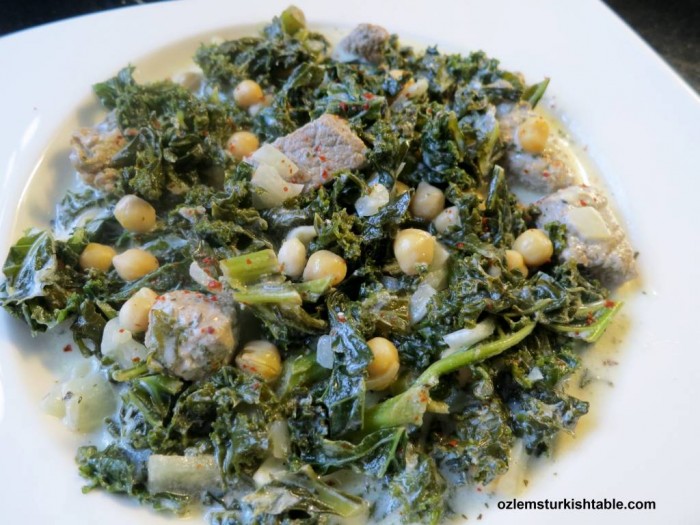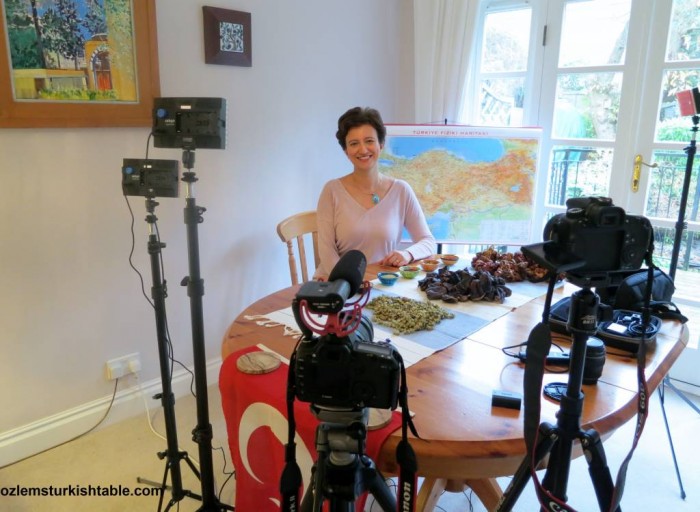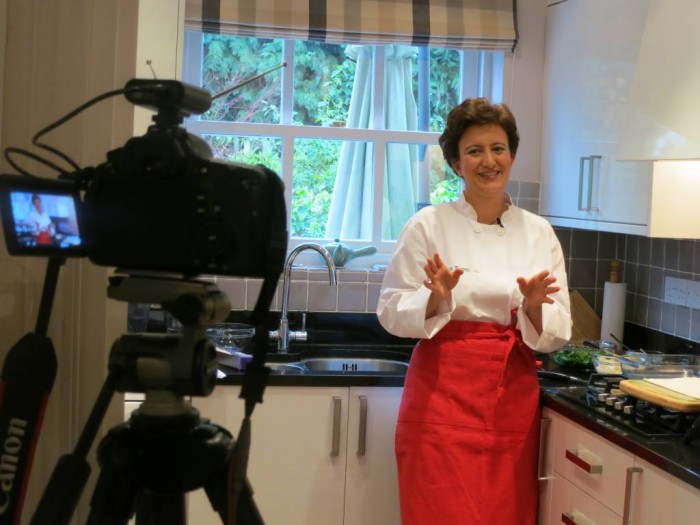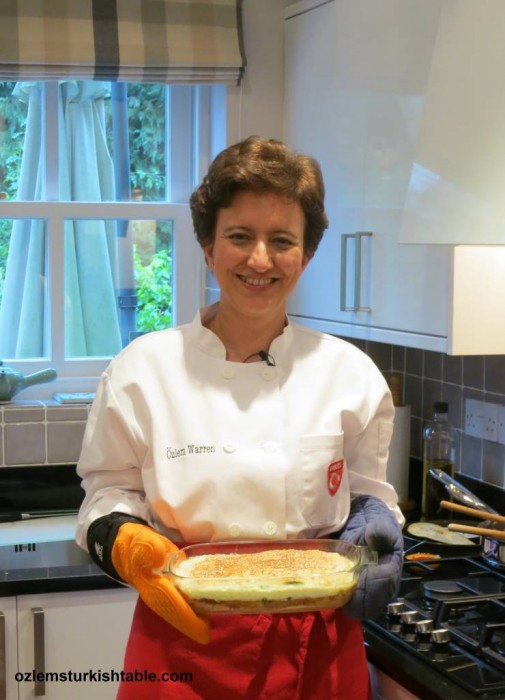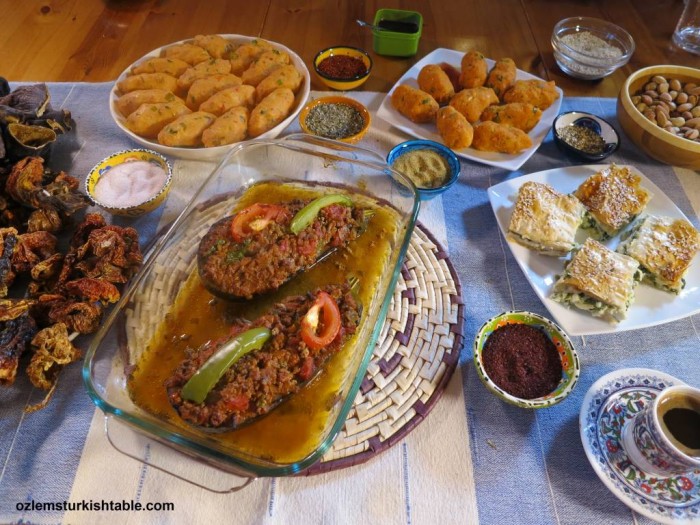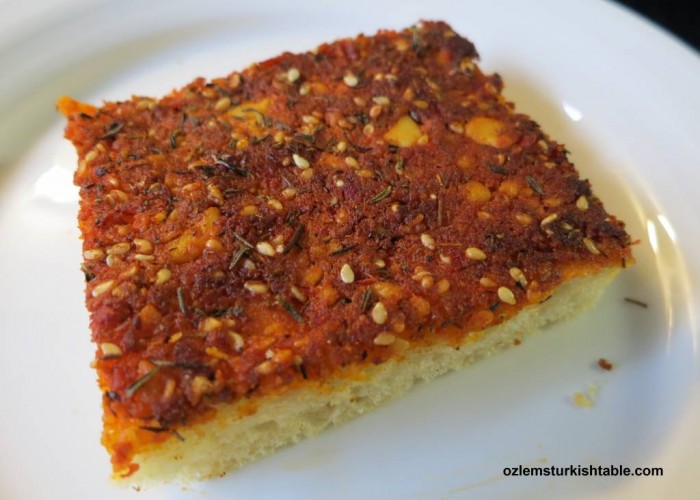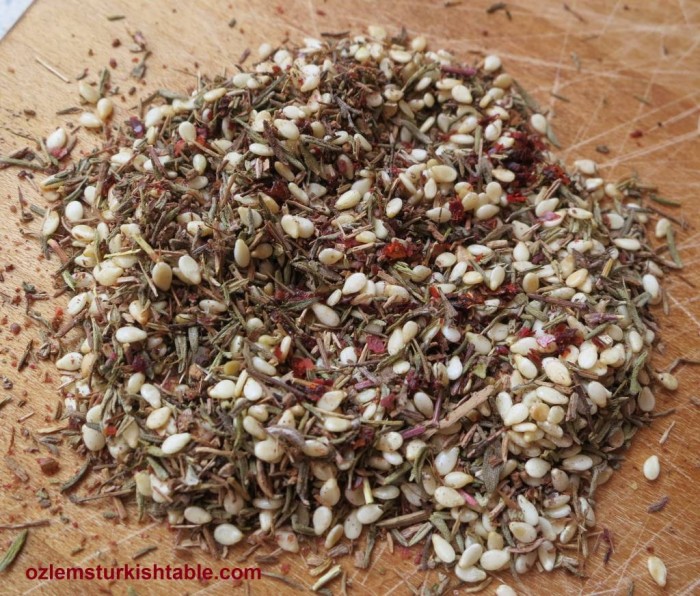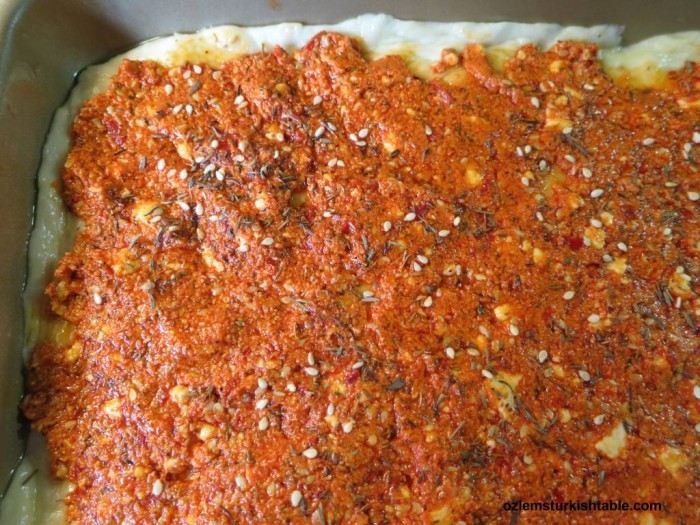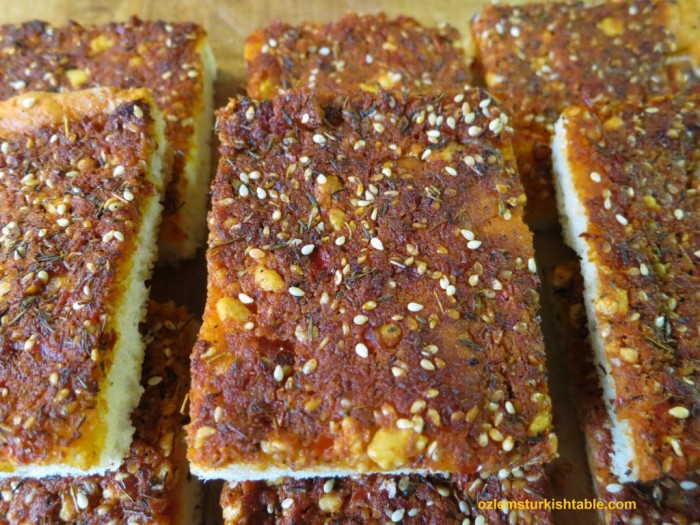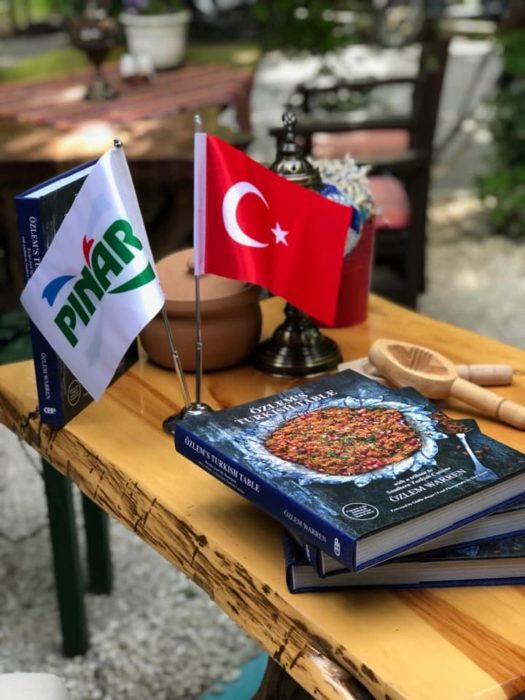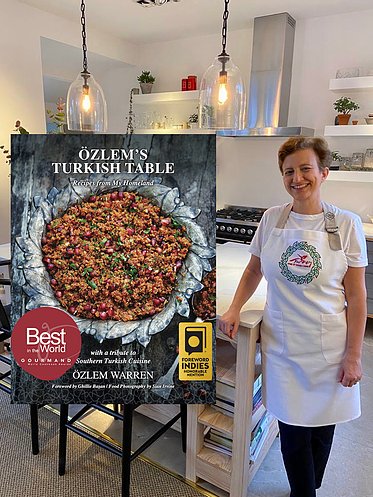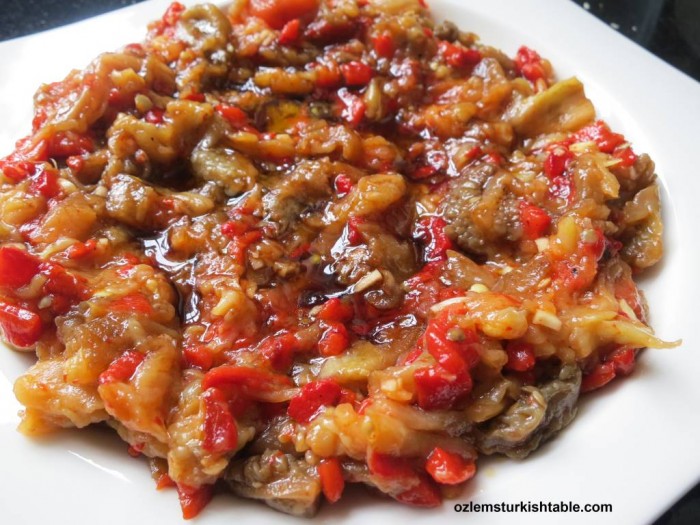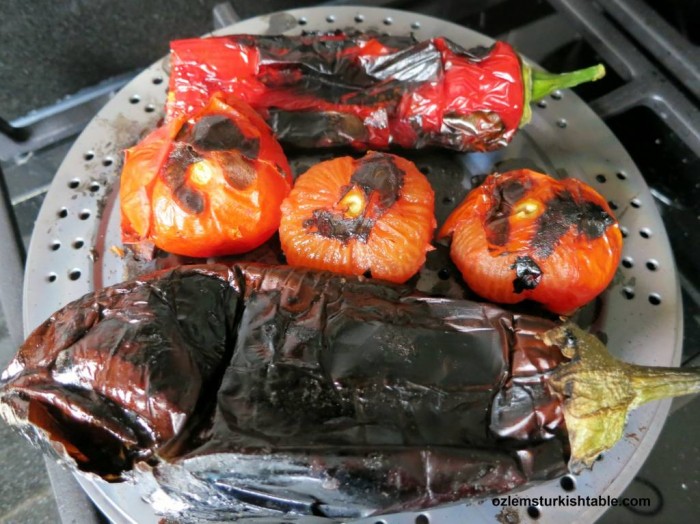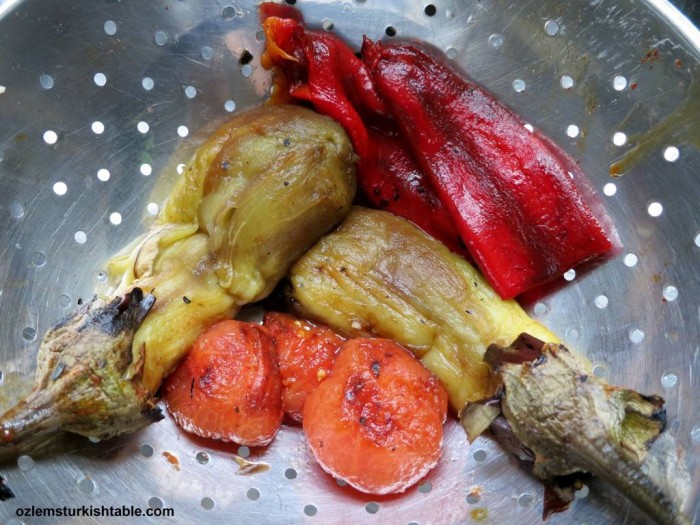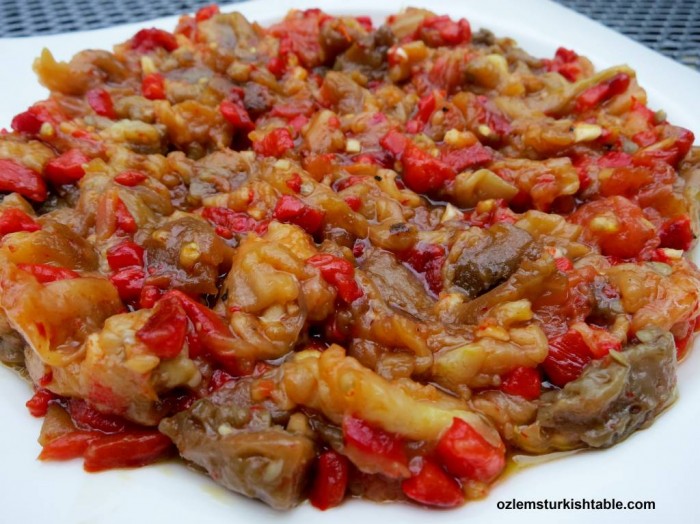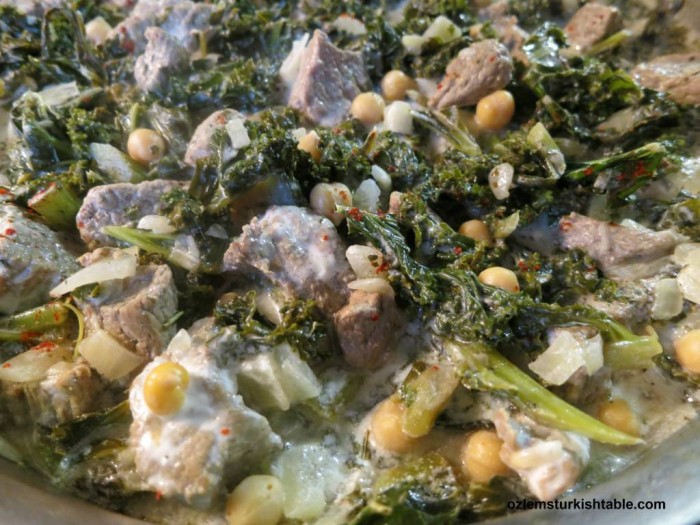
Kale with chunks of meat, chickpeas in yoghurt sauce with dried mint and red pepper flakes – A borani inspiration from Antakya
Borenye or Borani is an Antakya region specialty, which is served often as part of the dinner spread for special occasions in Antakya. I love this hearty dish especially in winter times; combination of yoghurt with chickpeas, vegetables and meat is just wonderful. We like to add more flavors to this special dish with dried mint and red pepper flakes; a delicious, wholesome comforting dish.
Traditionally, Borani or Borenye is made using another Antakya region specialty, tuzlu yogurt (strained, salty yoghurt, you can find more information here). Tuzlu yogurt is made from goat’s milk in Antakya region; it is a salty, rich, tangy spreadable paste and added to Boranis. I love tuzlu yogurt however it is hard to find abroad, so I used thick, plain yoghurt in my recipe, like my mother does, still works well. Boranis are made using a variety of vegetables like spinach, fava beans, pumpkin, courgette/zucchini. I used kale for my version here; combined with chickpeas, dried mint and red pepper flakes, it worked beautifully.
This Borani has a delicious sauce and we like to dip in potato and bulgur rolls, patatesli, bulgurlu kofte to its juice. Baked Oruk, or Kibbeh or Icli Kofte with that delicious walnuts and ground meat filling would also be divine served with borani or borenye.
I hope you enjoy this delicious regional specialty from Antakya, Afiyet Olsun,
Ozlem
- 350 gr / 12 oz. kale; washed, trimmed and chopped
- 400 gr/ 14 oz. beef or lamb, cut in small chunks
- 2 medium onions, finely chopped
- 3-4 garlic cloves, chopped
- 400 ml/ 14 fl oz./ 1⅔ cups thick, plain yoghurt (brand Fage works well)
- 400 gr/ 14 oz. -1 can of cooked chickpeas, drained and rinsed
- 30 ml/ 2 tbsp. olive oil
- 30 ml/ 2 tbsp. dried mint
- 10 ml/ 2 tsp. red pepper flakes
- 600 ml/ 1 pint/ 2 ½ cups water
- Salt and freshly ground black pepper to taste
- Heat the olive oil in a large, heavy pot and stir in the onion. Sauté for 2-3 minutes until it beings to soften and start to color.
- Stir in the chunks of meat and sauté with the onions for 3 -5 minutes over medium heat.
- Add the kale and the garlic to the pan and combine well. Stir and cook with the onions and the meat for 3 minutes.
- Pour in the water, mix well.
- Season with salt and freshly ground black pepper to your taste, combine well. Cover and cook over medium to low heat for 20 minutes.
- Stir in the cooked & rinsed chickpeas to the mix, combine well.
- Beat the yoghurt until smooth and pour into the pot, while the heat is low. Stir and blend well.
- Immediately add the dried mint and red pepper flakes, combine well. Check the seasoning to your taste, add more salt if needed. Turn the heat off.
- Serve hot with crusty bread aside. Potato and bulgur rolls, patatesli, bulgurlu kofte would be delicious to serve aside and dip into this delicious Borenye sauce.
My Online Turkish Cookery Course Coming Up Soon!
I have often been asked to do an online Turkish cookery course and I am delighted to share that we have just shot my online Turkish cookery course to be aired at the wonderful and holistic website Mer-ka-bah, by early January 2015.
Love of food connects us no matter where we come from and it has a universal language. And Turkish food is a wonderful expression of the warm, generous Turkish culture. In this exciting, holistic course on Turkish cuisine and serving traditions, I will be exploring the wholesome Turkish cuisine, based on thousands years of culinary heritage (Importance of connecting with our roots in Turkish cuisine, Turkish culinary history, Serving Traditions, Seasonality, Flavoring through Spices, recipe demonstrations and many more amongst the course modules) and its ability to connect us, our strong emphasis on sharing and hospitality. I will also demonstrate some classic and delicious Turkish recipes here; from Spinach & feta filo pastry, Ispanakli Borek to ever popular Stuffed Eggplants/Aubergines with ground meat and vegetables, Karniyarik, from Potato and Bulgur patties to Turkish Coffee.
I truly hope this course on Turkish cookery may inspire folks all around the world to discover wholesome Turkish cuisine and have a go at my recipes and enjoy good food with family and friends. Above all, I hope Turkish cuisine’s emphasis on sharing, generosity, hospitality, a reflection of the warm Turkish culture to be felt all throughout the course and inspires.
Stay tuned!:)
Ozlem

